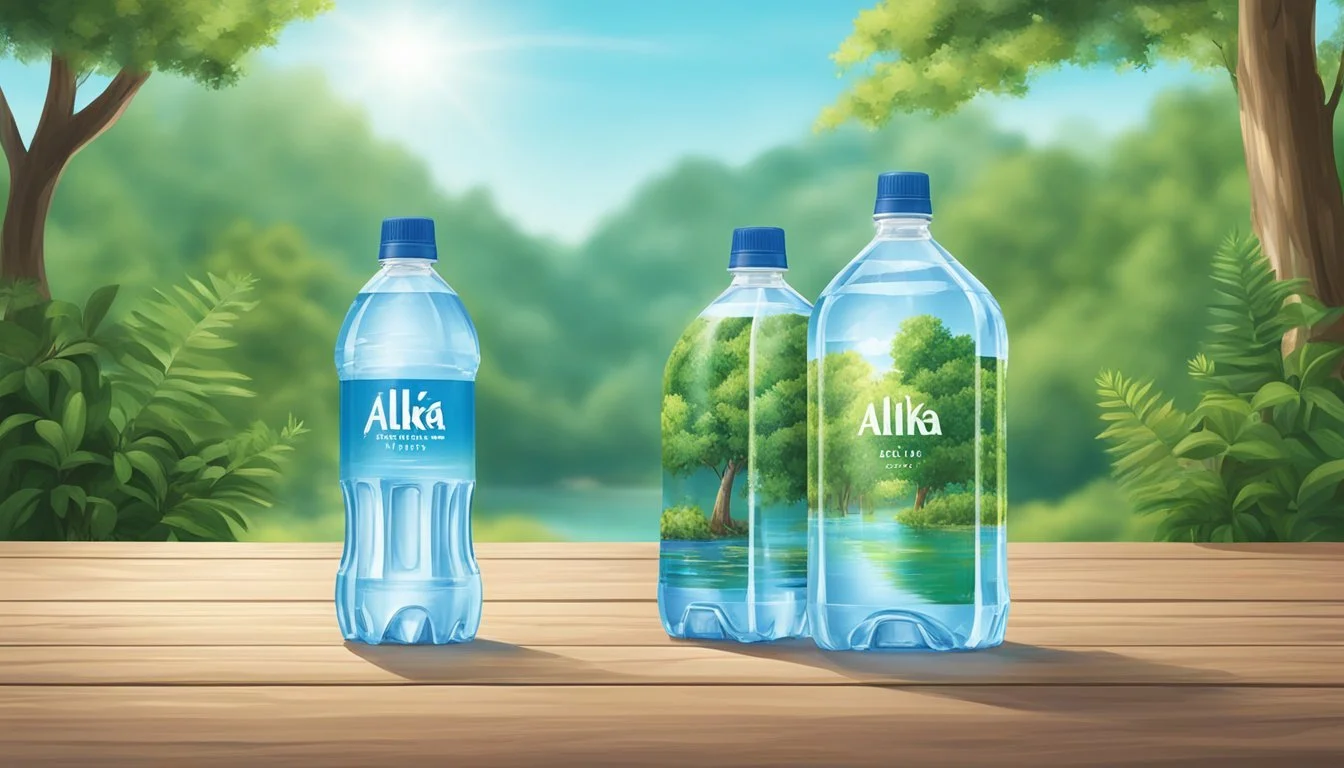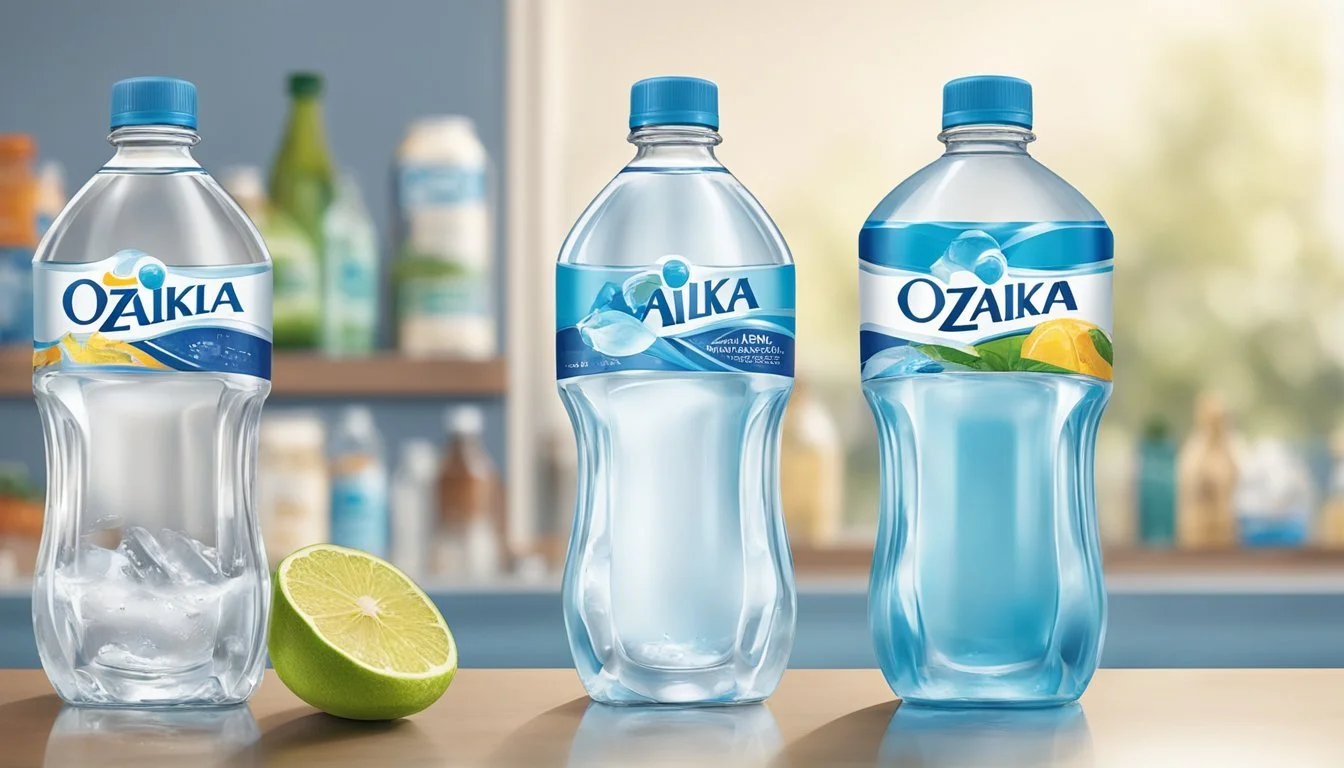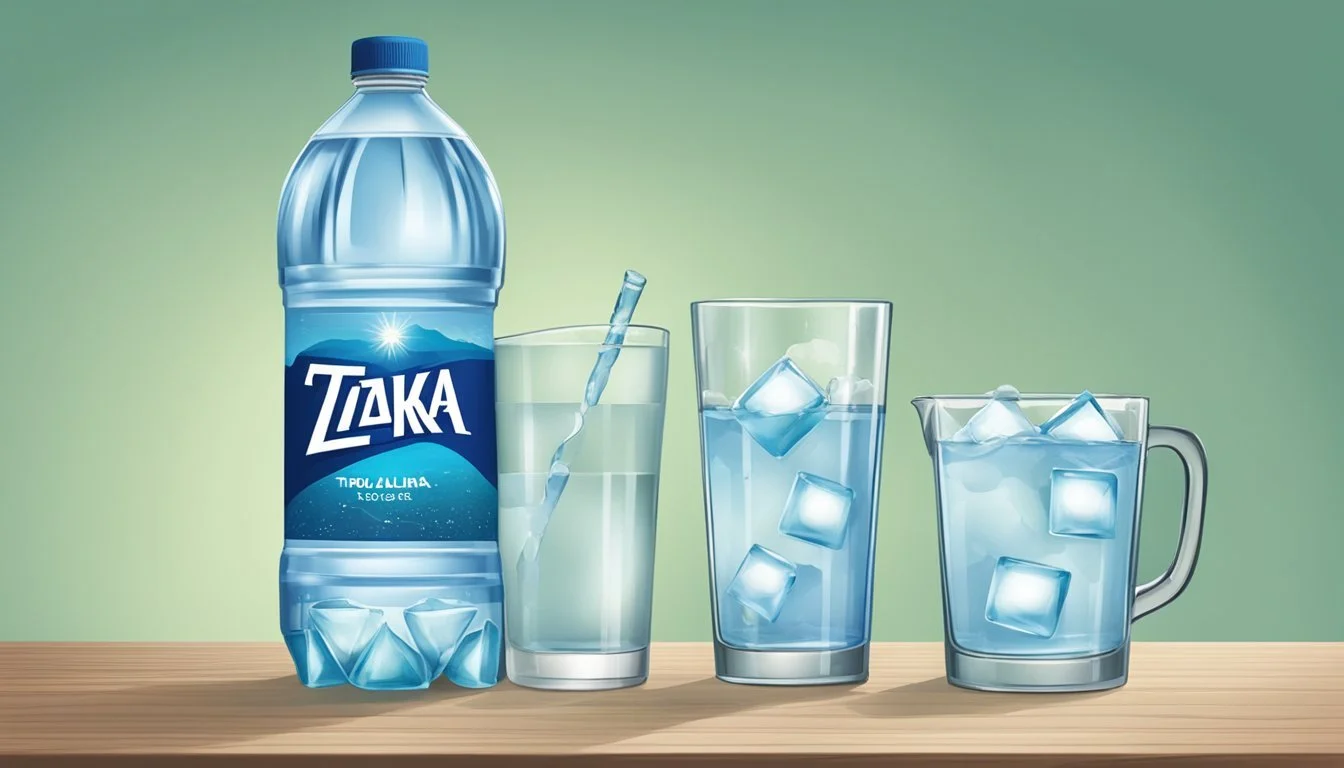Ozarka vs. Tru Alka
Which Bottled Water is Better for You?
When it comes to choosing the best bottled water, consumers often find themselves comparing popular brands like Ozarka and Tru Alka. Ozarka, known for sourcing its water from springs in Texas, offers a taste of authenticity that appeals to many who prefer a pure and natural flavor. In contrast, Tru Alka markets itself on being alkaline water, which is believed to provide numerous health benefits, including better hydration and a balanced pH level in the body.
For those prioritizing local and natural sources, Ozarka stands as a compelling option. Its commitment to delivering spring water from specific regional sources ensures consistency in taste and quality. On the other hand, Tru Alka meets the needs of health-conscious consumers looking for water that can potentially improve their wellness through its alkaline properties.
For consumers who value natural spring sources, Ozarka is a solid choice, whereas those seeking the supposed health benefits of alkaline water might find Tru Alka to be the better option. Ultimately, the choice between Ozarka and Tru Alka hinges on individual preferences and priorities, making understanding the strengths of each brand essential.
Comparative Overview of Ozarka and Tru Alka
Ozarka and Tru Alka are popular bottled water brands known for their unique qualities and sourcing methods. This overview will compare their brand history, origin, water source, and natural attributes.
Brand History and Origin
Ozarka is a longstanding brand, originally founded in 1905. It sources its water primarily from springs in Texas, ensuring a local character. The brand emphasizes its Texan heritage, appealing to consumers who favor locally sourced products. Its history of over a century underscores a consistent reputation for quality and reliability.
Tru Alka is a relatively newer player in the bottled water industry. It focuses on providing alkaline water, which is said to have various health benefits. Tru Alka promotes its water as being purified and balanced with added minerals to maintain an optimal pH level. This modern approach aims to cater to health-conscious consumers.
Water Source and Natural Attributes
Ozarka sources its water from natural springs, primarily in Texas. This spring water is celebrated for its clean, refreshing taste and natural mineral content. The brand's commitment to local sourcing ensures consistent quality and a connection to the natural environment of its origin.
Tru Alka offers alkaline water that is purified and enhanced with minerals. The water undergoes a purification process to remove contaminants before minerals are added to achieve an alkaline pH. This gives Tru Alka a distinct taste and potential health benefits, as alkaline water is believed to help with hydration and acid-base balance in the body.
By focusing on these key differences and attributes, consumers can make an informed decision based on their preference for either natural spring water from a historical brand or purified alkaline water with potential health benefits.
Health and Hydration Benefits
Understanding the health and hydration benefits of bottled water brands is crucial for making an informed choice. Evaluating factors such as pH levels, mineral content, and electrolyte presence can help determine which water better supports overall well-being.
Assessing pH Levels and Alkalinity
The pH level of water is a measure of its acidity or alkalinity. Ozarka typically has a natural pH level, usually around 7, which is considered neutral. This is common for spring water and helps maintain the body's pH balance.
Tru Alka, on the other hand, is marketed as alkaline water with a pH level usually between 8 and 9. Alkaline water is claimed to neutralize acid in the bloodstream, provide more hydration, and offer various health benefits. However, individual needs for alkalinity might vary, and scientific evidence supporting health improvements from higher pH levels is still emerging.
Electrolytes and Mineral Enhancement
Electrolytes like calcium, magnesium, and potassium are critical for maintaining the body's hydration and fluid balance. Ozarka spring water naturally contains these minerals, contributing to essential electrolyte balance and supporting bodily functions such as nerve signaling and muscle contraction.
Tru Alka also focuses on enhancing its water with beneficial minerals. The addition of electrolytes in Tru Alka is designed to optimize hydration and replace what is lost during rigorous physical activity. Consumers looking for higher mineral intake may find Tru Alka appealing for its added electrolytes and potential overall health benefits.
Hydration and Bodily Functions
Hydration plays an indispensable role in maintaining bodily functions such as digestion, temperature regulation, and joint lubrication. Ozarka, being a natural spring water, is effective in providing reliable and essential daily hydration. Its taste is often described as fresh and crisp, which might encourage increased water intake.
Tru Alka, with its higher pH level and electrolyte enhancement, aims to improve overall hydration. Alkaline water supporters believe it can aid in better nutrient absorption and detoxification. Both Ozarka and Tru Alka cater to different hydration needs and preferences, making it important to choose based on individual health goals and hydration requirements.
Quality and Purity Analysis
When comparing Ozarka and Tru Alka, understanding their quality and purity is crucial. Both brands prioritize safe and clean drinking water, yet they employ different methods and adhere to various standards in ensuring their product's integrity.
Filtration and Purification Process
Ozarka sources its water from springs in Texas, emphasizing a natural approach. Their water undergoes a filtration process to remove any particulate matter before bottling. Tru Alka, on the other hand, specializes in purified alkaline water. This brand employs a rigorous filtration process that includes reverse osmosis. Reverse osmosis is known for its effectiveness in removing impurities and contaminants, providing a highly purified end product. Both brands use advanced filtration techniques, but their focus differs—Ozarka aims to preserve natural spring water taste, while Tru Alka focuses on achieving a high level of purity and alkalinity.
Assessment of Contaminants
The assessment of contaminants is key to ensuring water safety. Ozarka's spring water is regularly tested for contaminants like lead, arsenic, and other harmful substances. Their water meets strict state and FDA regulations, ensuring it is safe for consumption. Tru Alka also conducts thorough testing, especially because their water undergoes the reverse osmosis process, known for reducing contaminants to minimal levels. Tests for contaminants such as PFAS chemicals and microplastics are common and necessary. Consumers can often find detailed reports on the levels of these contaminants directly on the brands' websites or through customer service.
Certifications and Regulations Compliance
Compliance with regulatory standards is a must for bottled water brands. Ozarka adheres to both state and federal guidelines, including regulations set by the Environmental Protection Agency (EPA) and the Food and Drug Administration (FDA). These regulations ensure that Ozarka’s water is consistently safe and free of harmful contaminants. Similarly, Tru Alka meets and often exceeds these standards, with additional certifications from industry bodies such as the International Bottled Water Association (IBWA). This certification illustrates their commitment to high-quality water standards and safety practices. Both brands' adherence to these regulations assures consumers of their water's safety and cleanliness.
Taste Profile Comparison
When comparing Ozarka and Tru Alka, it's crucial to understand their distinct taste profiles. This involves exploring the flavor characteristics and accumulating insights from various water taste tests.
Flavor Characteristics
Ozarka is known for its natural spring water, sourced from springs in Texas. It typically offers a fresh, pure taste that many find refreshing. The mineral content, naturally occurring in the spring water, contributes to its crisp flavor. Many consumers describe Ozarka as having a clean and somewhat neutral profile, which makes it versatile for a variety of uses, from drinking to cooking.
Tru Alka, being an alkaline water, presents a different flavor profile. The process of ionizing the water gives it a smooth taste with a slightly sweet aftertaste. This is due to the minerals added during the alkaline ionization process, enhancing the water's pH levels. Tru Alka’s taste can be described as crisp and refreshing, appealing to those who prefer a higher pH water.
Water Taste Test Accumulations
Taste tests conducted by various groups often reveal diverse opinions on Ozarka and Tru Alka. In multiple blind taste tests, Ozarka is frequently praised for its natural, clean flavor that doesn’t overpower. Tasters often appreciate the subtlety of its taste and its local spring sources, which many perceive as purer.
On the other hand, Tru Alka receives commendations for its unique smoothness and the slight sweetness attributed to its alkaline nature. Some prefer this flavor profile due to its reduced acidity, which can be easier on the palate. Accumulated feedback often highlights a preference for Tru Alka among those who favor alkaline water for both taste and perceived health benefits.
These insights provide a comprehensive view of how each brand's taste profile is received by consumers, highlighting the distinct preferences for either natural spring water or slightly ionized alkaline water.
Environmental and Ethical Considerations
When comparing Ozarka and Tru Alka bottled water, examining their impact on the environment and their ethical practices is essential. This includes evaluating their packaging materials, sustainability efforts, carbon emissions, and ethical sourcing practices.
Packaging and Recyclability
Both Ozarka and Tru Alka use PET plastic bottles that are lightweight and recyclable. Ozarka emphasizes its efforts in using recycled PET plastic (rPET) for its bottles, reducing the demand for new plastic production. Tru Alka, on the other hand, promotes the use of eco-friendly materials and encourages consumers to recycle through clear labeling and consumer education initiatives. Their approach aims to minimize plastic waste and contribute towards a circular economy.
Sustainability and Carbon Footprint
Ozarka sources its water from springs in Texas, aiming to reduce the carbon footprint associated with transportation. It also invests in renewable energy for its bottling plants. Tru Alka, conversely, focuses heavily on offsetting its carbon emissions through various programs and aims to achieve carbon neutrality. This includes measures to reduce emissions during production and distribution phases, making it a more sustainable choice for eco-conscious consumers.
Ethical Sourcing and Community Impact
Ozarka prioritizes sourcing its water locally, ensuring it meets strict safety standards while also supporting local communities. It often engages in community welfare programs and environmental stewardship initiatives. Tru Alka emphasizes ethical sourcing by conducting regular audits to ensure fair labor practices and minimal environmental impact. They also support global clean water projects, reinforcing their commitment to ethical practices and social responsibility.
This comprehensive evaluation of packaging, sustainability efforts, and ethical sourcing reveals key differences in how Ozarka and Tru Alka address environmental and ethical concerns. Such factors play a crucial role in determining which brand better aligns with consumer values.
Practical Aspects of Bottled Water Consumption
Evaluating Ozarka and Tru Alka involves understanding their convenience, accessibility, cost, and value. Consumer preferences often hinge on these practical facets, addressing the essential needs and expectations of everyday use.
Convenience and Accessibility
Ozarka is known for its local sourcing in Texas, making it widely available in that region. Its distribution ensures that consumers don’t have to go far to find it, often in multiple retail formats, from single bottles to large packs. This local accessibility is a significant advantage for those prioritizing regional products.
Tru Alka, while focusing on its health benefits with its alkaline properties, maintains a robust distribution network, though it may not be as geographically concentrated as Ozarka. Tru Alka is available in many health stores and selected supermarkets, catering to health-conscious consumers who prioritize alkaline water.
Cost Analysis and Value
Ozarka offers competitive pricing, particularly in its region, often providing value through larger pack options. Consumers can find Ozarka in a variety of sizes, which can reduce the cost per bottle. This makes it an attractive option for families and individuals looking for an affordable, reliable bottled water brand.
Tru Alka, positioned as a premium alkaline water, tends to be priced higher. This is due to its specific health claims and targeted marketing strategy. Consumers willing to pay a premium for alkaline water often see value in its potential health benefits, despite the higher cost compared to other brands like Ozarka.
Market and Brand Comparisons
Ozarka and Tru Alka occupy distinct places in the bottled water market, with differences in their sourcing, positioning, and consumer trust. This section will break down their comparative market positions and delve into how they are perceived by consumers.
Comparative Market Positions
Ozarka sources its water from natural springs in Texas, strategically positioning itself as a local and sustainable choice. The brand emphasizes its century-old heritage, capitalizing on regional loyalty and historical significance in the United States, particularly in the southern regions.
In contrast, Tru Alka offers alkaline water, aimed at health-conscious consumers. Marketed as a premium product with higher pH levels, Tru Alka appeals to those interested in the potential health benefits of alkaline water. It positions itself alongside other premium brands like Voss and Fiji, often found in upscale stores in New York and California.
Ozarka benefits from:
Regional loyalty
Lower cost per bottle due to local sourcing
Tru Alka focuses on:
Premium pricing
Health benefits
Ozarka's widespread availability in supermarkets and convenience stores contrasts with Tru Alka's selective presence in health-focused retail outlets.
Consumer Advocacy and Trust
Ozarka has built trust through consistent quality and clear labeling. As a member of the International Bottled Water Association (IBWA), Ozarka adheres to stringent standards, boosting consumer confidence. Transparency about its natural spring sources also enhances its reputation.
Tru Alka appeals to a niche market of health enthusiasts. Supported by endorsements and consumer testimonials, it leverages the perceived benefits of alkaline water to build trust. However, the premium price can be a barrier for some consumers.
Both brands face challenges:
Ozarka: Educating consumers about source quality amidst competition from brands like Dasani and Nestlé Pure Life.
Tru Alka: Justifying higher costs compared to more affordable options like Aquafina and Smartwater.
Overall, Ozarka and Tru Alka both maintain strong consumer advocacy, but their approaches and market demographics differ significantly.
More About Ozarka
Mountain Valley Spring Water vs Ozarka: Which Bottled Water is Better?
Ozarka vs Kirkland Signature: Which Bottled Water is Better?
Ozarka vs Richard's Rainwater: Which Bottled Water is Better?
Ozarka vs Whole Foods Italian Still Mineral water: Which Bottled Water is Better?
More About Tru Alka
Hawaiian Springs vs Tru Alka: Which Bottled Water is Better?
Icelandic Glacial vs Tru Alka: Which Bottled Water is Better?
Mountain Valley Spring Water vs Tru Alka: Which Bottled Water is Better?
Nestle Pure Life vs Tru Alka: Which Bottled Water is Better?
Tru Alka vs Cascade Mountain: Which Bottled Water is Better?
Tru Alka vs Kirkland Signature: Which Bottled Water is Better?
Tru Alka vs Richard's Rainwater: Which Bottled Water is Better?
Tru Alka vs Talking Rain AQA: Which Bottled Water is Better?
Tru Alka vs Whole Foods Italian Still Mineral water: Which Bottled Water is Better?






